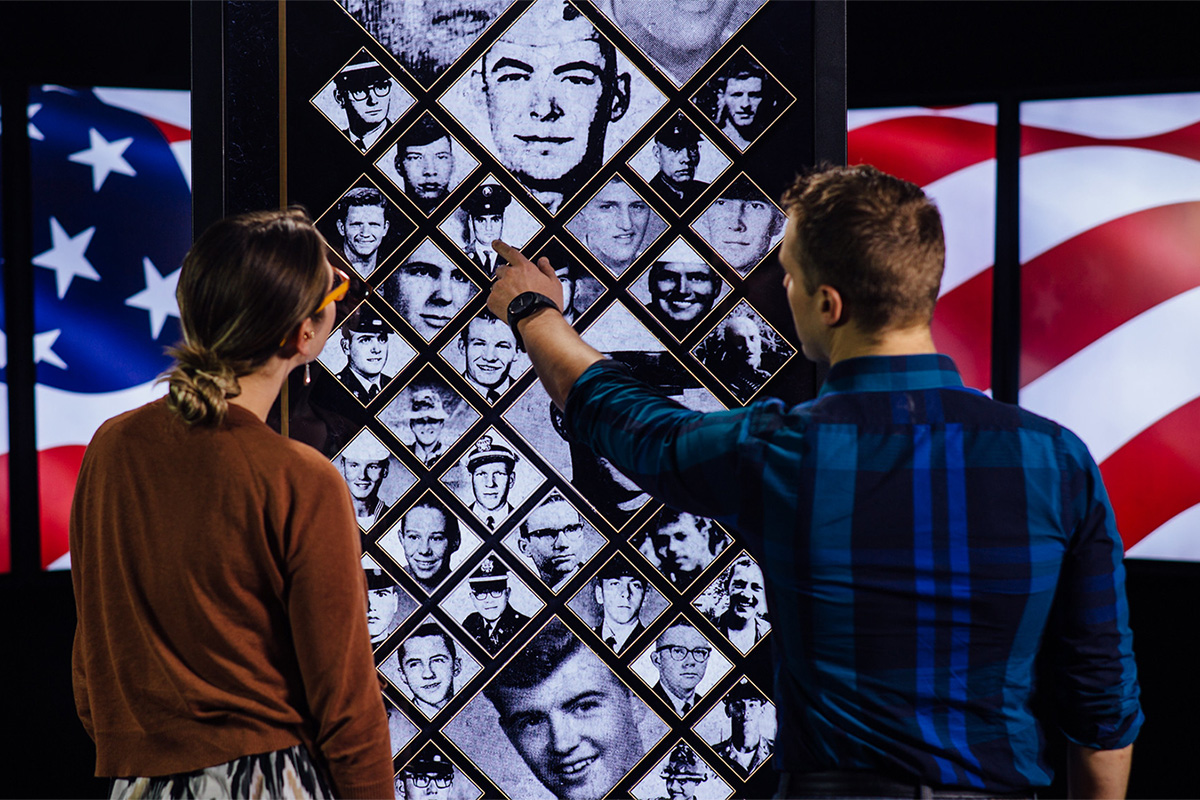
There’s no better place to learn about, reflect on, and remember the contributions of fellow service members and veterans than at one of the many memorials, military museums, and other historic locations found across the world. These institutions showcase the history that has shaped the world we live in today, often through extensive collections of military artifacts. Such artifacts are compelling in their own right—but at Ideum, our first questions focus on the people who used them and the stories they have to tell.
“Objects carry meaning for service members. They take you back to a specific memory—some good and some bad—but if we can frame artifacts in the context of interactive technology, military museums can provide easier access to these artifacts, especially to the wider civilian community. Text panels offer great information, but having the ability to add interviews and interactivity to artifacts can help elevate a visitor's understanding as to why these objects are so important,” says Ideum’s Art Director, Rafael Picco, who currently serves in the Air National Guard.
This philosophy—to reveal the human story—is fundamental to the creative process at Ideum. When we were asked to collaborate with the National World War II Museum to commemorate the 75th anniversary of D-Day, the project solidified into a mission to honor these warriors of the Greatest Generation. For example, more than 20,000 “Higgins Boats” were built from 1942 to 1945, but fewer than 20 of these iconic vessels remain today. The Museum wanted to create an interactive experience to tell the story of Andrew Jackson Higgins, the industrialist who changed the course of the conflict by designing and building these crucial boats. (In fact, Dwight Eisenhower believed that these landing craft were critical to Allied victory and said that Higgins was “the man who won the war for us.”) Placed next to the Museum’s full-size Higgins Boat replica, the digital experience allows guests to delve deeper into the story by exploring interviews, maps, and an interactive 3D model of the boat itself.
Some military experiences offer a sense of hope to service members even in the midst of combat. In the case of the National World War II Museum’s exhibition “So Ready for Laughter”, Ideum enhanced the experience by creating an interactive story allowing visitors to explore Bob Hope’s 1943 tour of Europe and Africa and 1944 tour of the South Pacific. “When you’re deployed, you not only miss your family and friends, but those little moments where you can forget about what’s going on and enjoy yourself. The USO assists in that aspect, and I could imagine how those soldiers felt when they got to see Bob Hope perform. When it came to designing the application, I really tried to channel those emotions I felt while deployed and attending USO events. The physical and digital artifacts that were provided by the National World War II Museum further enhanced the joyful tone and respite Hope brought to our troops,” says Picco.
It’s important to note that many of these digital stories we aim to tell involve service members who have made the ultimate sacrifice. Often, artifacts alone cannot reveal the narratives behind these combat deaths. The Faces to Go With Names exhibit began in 2013 as a crowdsourcing project by Tom Brickman, a Vietnam War veteran. As the project took shape, the staff of the Sullivan Brothers Iowa Veterans Museum, in Waterloo, Iowa collected and digitized images of each of Iowa’s 853 fallen Vietnam War heroes for visitors to explore. This multifaceted exhibit features a touch display in a large memorial housing. Once in front of the screen, the visitor comes face to face with a particular fallen service member and can read their story. But the viewer is also overcome by the sheer number of individuals to choose from. The stream of images are rendered as etchings reminiscent of the Vietnam Veterans Memorial in Washington, D.C., and when one is selected and tapped, an actual photo of the soldier appears at life size and at eye level within a plaque picture frame. In addition, visitors can then create a rubbing and print a commemorative card with the soldier’s information. This incredibly meaningful memento serves as a reminder of their visit, and the connection they had with one of those Iowans lost in the war.
We have been honored to collaborate with a wide range of organizations to create exhibits exploring our military history going back to the founding of the Republic. We feel it is essential to keep these powerful stories alive—stories that focus not only on military history writ large, but also on the individuals who bear the burden in major conflicts through service, sacrifice, and choosing the greater good.
